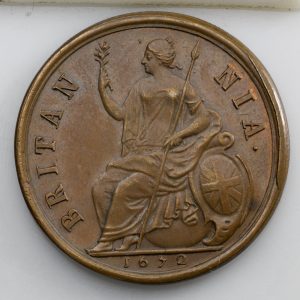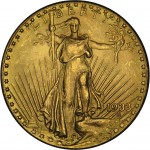The latest “controversy” surrounding the U.S. Mint is that the depiction of Lady Liberty on the new U.S. Mint 225th Anniversary 24-karat gold coin is depicted by an African-American woman.
This comes after 225 years of depicting Liberty as a white woman—or is it? (see below) What has caused even a bigger stir in some sectors was in the statement released by the U.S. Mint, they say that this “is the first in a series of 24-karat gold coins that will feature designs which depict an allegorical Liberty in a variety of contemporary forms-including designs representing Asian-Americans, Hispanic-Americans, and Indian-Americans among others—to reflect the cultural and ethnic diversity of the United States.”
I saw one blog post ask, “How dare they do this?” Followed by asking, “What’s next, a Mexican?”
If these folks would stop fomenting and learn a bit about history, this is part of the evolution of how we have depicted Liberty since the discovery of the New World
One of the first uses of woman as allegorical figures at back to the goddess of ancient Greece and Rome. Both gods and goddesses were allegorical figures of the power they represented using an exaggerated version of the human forms they knew about. Using woman as strong, matronly-like figures guarding over a country’s sovereignty like a protective figure.
Prior to the discovery of North America, Britain had Britannia. Britannia was the allegorical figure as the protector of the British Empire. Named for the Greek and Roman term for the geographical region, Britannia is usually seated facing the water. Although most images has her seated on a shroud-covered seat, sometimes Britannia is depicted sitting on a horse. She is wearing a helmet, hold a trident and a shield emblazoned with the Union Jack to show she is the protector and ruler of the seas. It is not a coincidence that Christian Gobrecht’s Seated Liberty design is similar to the design used for Britannia.
When the first European settlers arrived, they used the image of an “Indian Queen, a voluptuous, but stern Native American woman dressed in little more than head feathers. Portrayed sitting astride a giant armadillo or sporting a tomahawk, the Indian Queen represented exoticism, danger and adventure: attributes that 16th- and 17th-century explorers most associated with their new land.”
As colonization grew and the native American tribes and the settlers were not getting along (you would also be angry if these outsiders were pushing you off your native lands), her looks were softened to look more Anglican in appearance trying to represent what was perceived as a less hostile look.
The look of Liberty has changed with the artist that have designed her image. The most famous image of Liberty is the statue by Frédéric Bartholdi titled “Liberty Enlightening the World,” or more commonly known as the Statue of Liberty. Bartholdi, a French sculptor, reportedly used his mother as the model for the statue’s face. This makes the most famous depiction of Lady Liberty a French woman.
Two of the most famous and different depictions of Liberty were created by George T. Morgan and Anthony de Francisci. Morgan used actress Anna Willess Williams as the model for his design noting that her profiles was the most perfect he had ever seen. For the Peace dollar, de Francisci used the portrait of his wife, Teresa, as the model. With rays instead of a crown or a headdress departing from previous designs, using the image of Teresa de Francisci means that an Italian-born woman was depicted as Lady Liberty since she was born in Naples, Italy.
Many references claim that Martin Van Buren was the first U.S. born president because he was born in 1782, after the signing of the Declaration of Independence. However, the Treaty of Paris, which established the United States as a new country, was not signed until September 3, 1783. Although the colonies declared itself independent in 1776, the United States was legally not a country until the signing of the Treaty of Paris.
These are also not the first examples of someone not being born in the United States being depicted on U.S. coinage. In 1892 and 1893 the U.S. Mint produced the Columbian half dollars with the image of Italian-born Christopher Columbus. Although these coins were only struck as a commemorative, they were circulated and used in commerce. However, the first coin struck for circulation that included the image of a foreign-born person was the Washington quarter. George Washington was born in the British Colony of Virginia in 1732 as a British subject. In fact, the first nine presidents were born British subjects in the colonies. It was not until John Tyler succeeded William Henry Harrison as president in 1841 when a United States-born citizen became president. Tyler was born in 1790 in the State of Virginia.
Although there are many examples of African-Americans appearing on commemorative coins. In the Classical Commemorative Era, the U.S. Mint issued the 1946-1951 Booker T. Washington and 1951-1954 George Washington Carver/Booker T. Washington Commemorative half-dollars. Modern Era Commemoratives include the 1998 Black Revolutionary War Patriots Silver Dollar featuring the portrait of Crispus Attucks, 1997 Jackie Robinson commemorative coins, and 2007 Little Rock Nine Silver Dollar featuring the legs of the Little Rock Nine being lead to class.
For circulating coins, the reverse of the 2002 Missouri State Quarter features William Clark’s slave York paddling the canoe with both Meriweather Lewis and Clark in the boat. The reverse of the 2009 District of Columbia quarter honors Duke Ellington.
Do not forget that Sacagawea is a non-Anglican being featured on a circulating coin, even though the coin really does not circulate.
But is this the first African-American Lady Liberty?
Finally, there is a claim that the model used by Augustus Saint-Gaudens for the design of $20 double-eagle gold coin was Harriette Eugenia “ Hettie” Anderson. Hettie Anderson was an African-American model from South Carolina considered an extraordinary beauty. Anderson was known to pose for Saint-Gaudens and many other artists with connections to Saint-Gaudens, such as Adolph Weinman.Because of the treatment of blacks in America, Anderson’s part in Saint-Gaudens’ work was kept quiet. After his death, Homer, the artist’s son, edit Anderson out of his father’s unfinished autobiography. This information was later discovered by William E. Hagans. Hagen was researching the Swedish artist Anders Zorn, who worked with Saint-Gaudens. While reviewing Zorn’s work, he found a sketch Zorn made with Saint-Gaudens and a nude Hettie Anderson lying in the background. After further research, Hagen discovered that Anderson was modeling for Saint-Gaudens at the time he was designing the double-eagle. It was later that Homer Saint-Gaudens removed Anderson from the history of this coin’s design.
If this is true (see “Written out of History” on this page), then this is not the first time Lady Liberty was depicted as an African-American Woman!

Anders Zorn’s etching of Augustus Saint-Gaudens taken a break with a nude Hattie Anderson laying behind him.
- Composite image of the American Liberty gold coin courtesy of coinews.net.
- Image of Britannia coin courtesy of the Royal Mint.
- Seated Liberty quarter image courtesy of Numista
- Morgan and Peace dollar images courtesy of Wikipedia.
- Anders Zorn etching of Augustus Saint-Gaudens image courtesy of Wikimedia Commons.








Scott
We have a declining middle class, people going broke sending the kids through college, terrorists and other killers killing people at all sorts of places (I was in Fort Lauderdale for the FUN show when the airport shooter kiled people but not at the airport), etc. Could both sides please concentrate on these issues? I think many people of all colors would like that.